Luca Nichetto has pieces on display with six different companies at this fair alone, ranging from a lighting installation at Foscarini’s Stockholm showroom, to lounge chairs, tables, and even a series of outdoor planters, nearly all of which are being shown for the first time.
From the perspective of an up-and-comer who’s surely arrived, Luca Nichetto was happy to pull the curtain back on the furniture fair circuit, share what it was like to design "Das Haus" at imm cologne last month, and explain how his upcoming exhibition in Milan will have a lot to do with Japanese poetry.
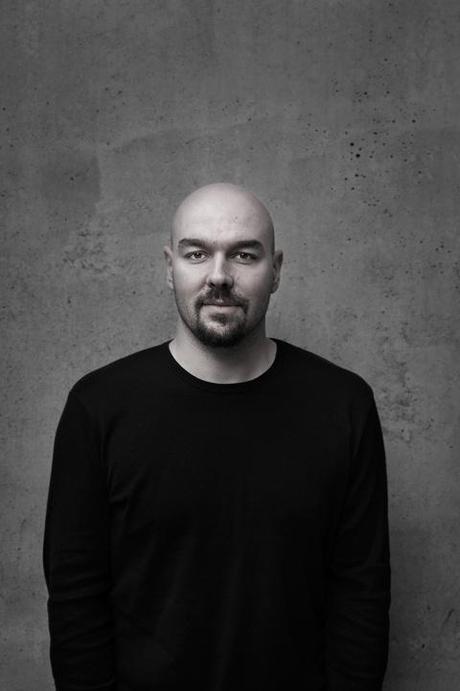
The designer. Photo by: Markus Moström
But wait, a part-time resident of Stockholm? I thought you were based in Italy.
Yes, I was born in Venice - in Murano actually, where the glass is made. I still have my studio in that area. But in 2011 I opened a second office in Stockholm. My girlfriend is from Sweden, so I normally spend two weeks in Stockholm and two weeks in Venice.
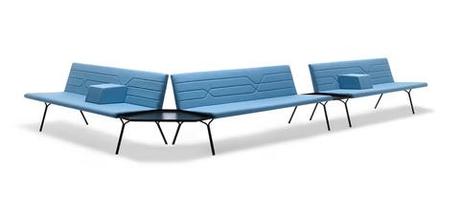
Linea sofa for Offecct – A modular seating system designed for public spaces. It features a playful set of infinite lines inspired by the Italian cartoon, “La Linnea” that dip and weave, seeming to interact with moveable armrest dividers. Photo courtesy of: Offecct
Ah, so that explains why you have so many new pieces with Scandinavian companies here at the fair this week.
Yes, I am premiering four products. One is for Offecct, called Linea. It is a sofa bench for the contract market. And there is a lounge chaise that I designed for One Nordic, a Finnish company. A small table for David Design, and a planter for Berga Form.
Living here [in Stockholm] I’ve learned a lot about the Scandinavian approach in design… more functional and clean. Italian design is much more focused on the creative, the strange, the emotional. So I try to balance these two things… to put more emotion in the Scandinavian design, and maybe some function into the strange projects of Italy. Mårten Claesson of Claesson Koivisto Rune told me once that they had an Italian client that told them “We really need a Scandinavian product with tomato sauce”. This is my goal.
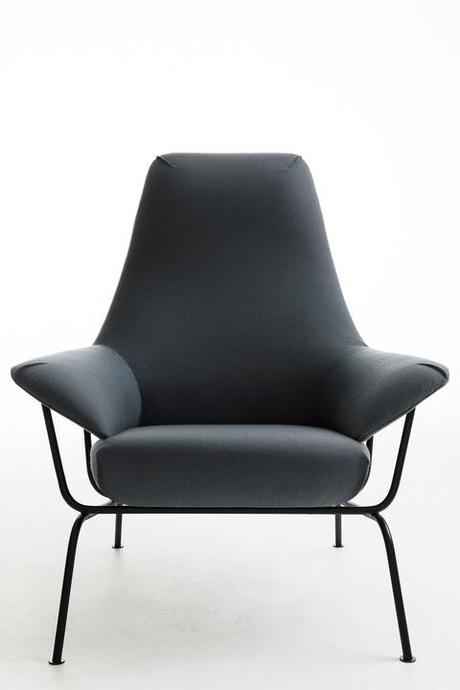
Hai lounge chair for One Nordic Furniture Company – A lounge chair that meets both the desire for a comfortable high quality piece of furniture with a strong personality, and the functional need to package it for online sales. The chair is made up of three modular components that are assembled on site. Photo courtesy of: One Nordic Furniture Company
You add that saucy Italian flair.
Yes!
You were kind of a big deal last month at imm cologne… You were invited as guest of honor to do the “Das Haus” exhibit and create a concept house inside the fair, from architecture to interior design, and even outdoor spaces. What was that like?
I remember quite well when imm cologne contacted me in June of last year. It was a big honor for me because I’m the first Italian to be involved in this kind of project, and I don’t have any idea why they decided to – well actually, it’s probably because I’m the only Italian designer of the new generation to work outside of Italy, not just with Italian companies. And this has probably helped me to build my own brand outside of Italy, so maybe I’m more visible than some of the others. But this was my first architectural project. It was in a fair of course, but it was like a real house. We tried to create everything. (Laughs) We even bought pasta and coffee for it – everything!
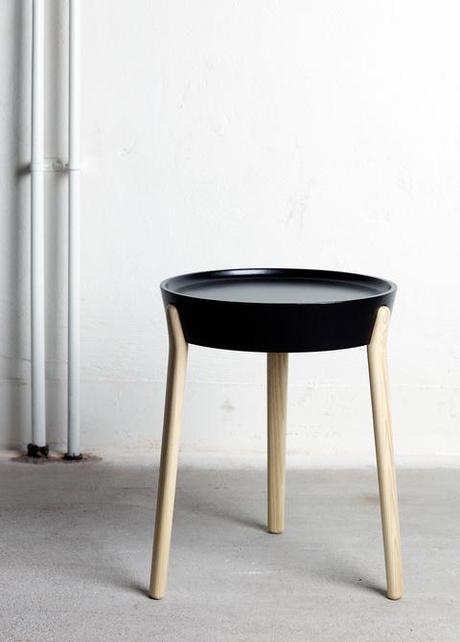
Coccola Table for David Design – A small table made of sand-casted aluminum and solid oak legs. This piece is a collaboration with young French designer Marion Gros. Photo courtesy of: David Design
Were you given free reign to do exactly as you wanted or were there constraints you had to work within?
There was only one request, and that was to show an eco-friendly approach. I believe that to respect your environment, it’s important to have quality around you so I started there. And I also looked to the past. In the 1950’s in the United States for Charles and Ray Eames and George Nelson for instance, it was common to have a lot of plants inside the house, because plants help clean the air and offer many benefits to the people who live there. So I created a sort of forest with a green heart in the middle for the living room, and made the house full of plants. My idea is that if you take care of the plants, in this sense you take care of the house, and the house takes care of you.
So Cologne was very good for you this year. Which of the other fairs tend to be really good for you?
Milan for sure is an important fair. It’s not my favorite because it’s so huge that it’s impossible to have this kind of quiet moment with someone. Here it’s much more relaxed, the way you can talk with people, enjoy your time, see what else is around. But in Milan that’s impossible. You have to run. You are always in a hurry.
But for me, I really like Tokyo.

Plantrellis planter for Berga Form – A collection of outdoor furniture consisting of three concrete planters and three versatile metal trellises that can be mixed-and-matched to serve as support for climbing plants. Photo courtesy of: Berga
What’s most interesting for you about Tokyo?
Japan is amazing. It’s not necessarily the fair that’s the best part, but for a European guy to discover that amazing culture, and the precision with which things are done, is fantastic. In fact I’m starting to do a project with Oki [Sato] of nendo. But only for fun, not for a company. We decided to develop some projects together that we will show in Milan.
In Milan this year, in just a couple of months?
Yes! I said “Come on, Oki. We are the new generation. In the past there was Ettore Sottsass with Shiro Kuramata, they had an exhibition together. And Jasper Morrison with Naoto Fukasawa. But those people showed their work, they didn’t design anything together. We can try to design something.” And he said “Yeah yeah!” So we started to work his way, and it’s fantastic.

Hangar Meeting Table for MG LAB – This table premiered in 2012. It was designed with a space underneath the tabletop to stow away electronic devices that need to be close at hand without contributing to tabletop clutter.
How does that kind of collaboration work? What was Oki’s way?
Oki told me that in Japan in the past, there was this poetry called renga where one poet would send the first three sentences to another poet. And the second one replied with the last two sentences. So we tried to work in this way. He sent me some sketches and I worked on his sketches and sent them back. At the same time I sent him my sketches and he worked on them and sent them back to me. It was a really nice way to work, very natural and fun.
What are some of the other important fairs? New York? For me there are three fairs that are really important. One is Tokyo, one is Milan, and the other one is New York. If you are able to be at these three Design Weeks, then you can touch a little bit of three different worlds. It’s really interesting. And Stockholm is important to me because I live also in Stockholm. Of course in Europe there are always many extra things going on during the year.
If the Milan, Tokyo and New York fairs are like three different worlds – and we’ve touched on Tokyo already – how would you define the other two from a design perspective?
Well Milan is the capital of design for so many reasons. And I find New York really exciting. There are some places in our world that you need to be to understand what’s going on, and New York is one of those places. You can feel it in the air. There’s a lot of good energy from the city and from what happens there. So for me, New York is kind of a trend city. But I still find Tokyo to be most inspiring.
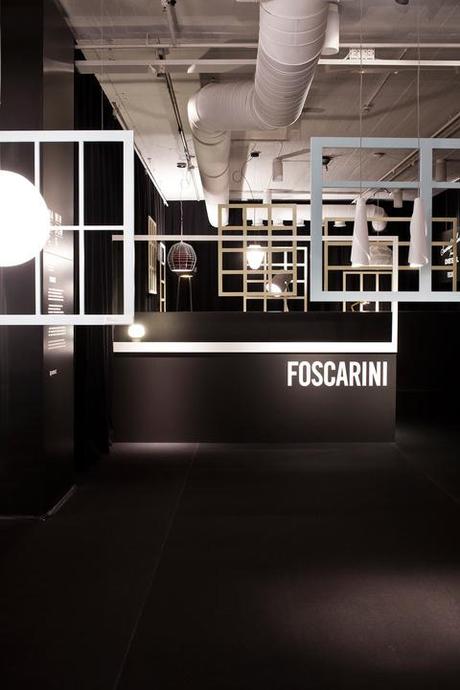
“Magic Windows” by Luca Nichetto for Foscarini - Foscarini lamps come to life behind a series of windows that offer an imaginary glimpse of homes and the people within. This installation was at Foscarini’s Stockholm showroom during Stockholm Design Week 2013, and was inspired by the typically Northern European habit of leaving curtains open at home, providing glimpses of light and fragments of daily life.
So which fairs will we be seeing you at then this coming year?
After Cologne and Stockholm, of course Milan. The few projects I showed at the Cologne fair were a preview of what I will show at Milan. At Milan I will have this exhibition I told you about with Oke, and a new product for Cassina, and another new product for DePadova, a bench for a new up-and-coming French company called La Chance, and there are some interiors projects that are going on… we will see what happens. There are many interesting projects that are starting now.
And after Milan, what then?
I think after Milan I will need a holiday! But then of course it’s back to New York in May.
